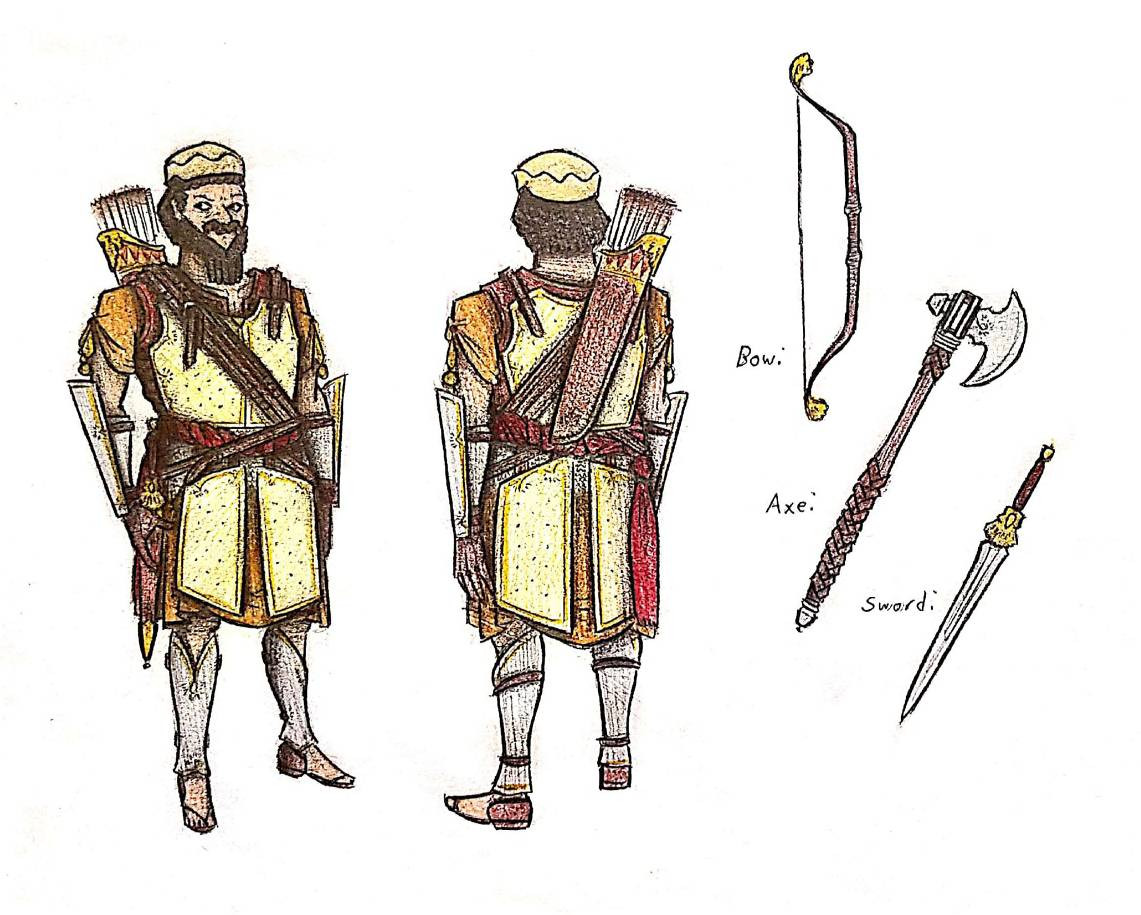HOME | DD
 Avapithecus — Aspathines
Avapithecus — Aspathines

#character #design #history #iran #persian #referencesheet #achaemenid #aspathines
Published: 2023-05-02 13:09:26 +0000 UTC; Views: 2455; Favourites: 26; Downloads: 5
Redirect to original
Description
This entry is probably going to be a little shorter. Aspathines is one of those obscure historical figures from ancient times who's only famous for one snippet of the historical record and then just kind of vanishes. He was the bow-bearer of King Darius the Great, depicted on the Behistun Inscription as carrying the king's weapons. While today this may sound like a lame gig to go down in history with, it was actually quite the coveted title in antiquity. The bow-bearer was an official's right hand man, quite literally responsible for handing the tools of victory to their lord, and with that came power and prestige. Herodotus and a handful of Persian inscriptions confirm that Aspathines was the cupbearer of Cambyses II, and the son of Prexaspes, who himself was a close advisor to the king. This is the same Prexaspes whose son Cambyses supposedly killed in a state of drunken madness, and the same whom Cambyses sent off to kill his brother Bardiya.Aspathines is not, however, the same as the bow-bearer who helped Darius and his conspirators assassinate the imposter that Cambyses supposedly put in his brother's place in 522 BCE. Persian sources confirm this was a different official named Ardunamish, who held the position before Aspathines and is often conflated with him. The confusion comes from Herodotus, because of course it does. It seems Aspathines's career outshone his predecessor, to the point where he was depicted in all of Darius's memorabilia by the end of the king's life. By Herodotus's time these memorabilia were the most available list of Darius's inner circle, so the Greek historian identifies Aspathines and Ardunamish together into one person. Since there's little to no details I could find on Ardunamish, and for the sake of storytelling, when I crafted Aspathines as an NPC in my D&D game, I went ahead and just did as Herodotus did and combined their roles. Once Darius became king, Aspathines made a name for himself as an administrator in Persepolis, and continued to hold that position until at least 483 BCE, when he drops out of the historical record.
Design notes, the only good picture of Aspathines out there is the one carved onto the Behistun Inscription, so that was my main reference for his basic silhouette. I've read that there are others carved into the tomb of Darius, but I haven't been able to find pictures. Aside from that, I mostly improvised. Admittedly, I took more inspiration from Sassanid soldiers than Achaemenid ones, just because we have more samples of their armor and trimmings, and they're quite pretty. Still, I think I made enough alterations so that he wouldn't get any anachronistic glares walking around the 6th century BCE. For the metal parts of his armor, I actually took reference from a species of beetle which has the genus name Aspathines, which came up in my search for reference images. I tried to track down why specifically they chose that name and if somehow a Central American beetle had some strange connection to an ancient Iranian official but… no such luck. As far as I can tell, the only thing the internet knows about this beetle is that it… exists. Awesome. It looks really pretty though, so I still gave it a little nod in Aspathines's breastplate. If someone out there in the internet hive mind somehow knows the story behind this beetle's name, please do let me know, because now it's gonna itch my brain until I find out-
























